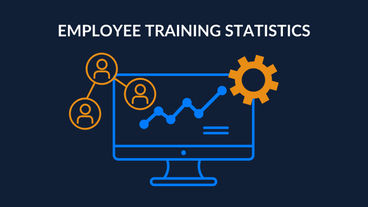
The Benefits of Multimedia Training
Posted on 05/05/21 By Lorman Team
According to statistics, an engaged and appreciated workforce is 59% less likely to seek employment elsewhere.
Multimedia training helps employees to learn new skills and improve their existing skills. Training programs with multimedia materials are accessible to all employees and help keep people engaged in their work.
Employees are able to learn new skills and move into jobs that pay better within the organization, making training beneficial to both employees and their employers.
What is Multimedia Training?
Multimedia training refers to using more than one medium to communicate information. This includes audio, visual, and written materials to help people learn new skills to meet their career objectives.
This is the modern way to instruct employees who want to learn about the latest advances in business and technology. The incorporation of a variety of media gives people different opportunities to participate in the learning experience.
The actual presentation of new materials and ideas influences how people learn. Modern society with its dependency on electronics has moved way beyond the printed pages of textbooks.
Multimedia training programs use a combination of methods that include:
- Lectures in person or online
- Audio instructions
- Videos
- Hands-on training
- Written materials
Many training programs incorporate all of these elements in the education process. For example, a learner may watch an online course, read through a supplementary white paper, and even download the course audio to listen to later.
How We Learn
The learning process starts with sensory memory. This is the first contact with new information, and it can be easily forgotten.
The working memory filters out unimportant data and tries to keep the information that is needed in the learning process. Material that is presented through multiple sources will help a person remember certain facts and procedures.
Based on the Cognitive Theory of Multimedia Learning developed by Richard Mayer, people learn more from pictures and words than from words alone. They remember the image more than the printed materials.
Today, this translates to videos, slide presentations, animation, photos, drawings, and other illustrations. The brain will absorb and remember processes that are presented in an interesting and informative way.
People in the workforce today have grown up with television, videotape, DVDs, and computers. Millennials are the generation of computers, the internet, and smartphones.
People know that information is at their fingertips through visuals and audio podcasts in addition to written formats. They can watch a how-to visual presentation on their smartphones. They also know that they can be entertained almost instantly through their various mobile devices.
Training Program Development
Many employees are eager to learn new skills. Effective training programs should be offered in modules that use familiar techniques to present audio and visual information. Personal contact is also important, but lectures can be boring without visual aids such as PowerPoint or product demonstrations.
Colorful drawings, graphs, photos, and other illustrations help people remember a lesson. Text or printed information may be used for backup. Many educational programs do not depend on text unless paperwork is necessary to complete a process.
Training programs must be created to meet the objectives of employees and the company. Multimedia training programs will help your employees learn, retain, and use new information.
Find out how Lorman's online training solutions can benefit your employees and help them grow within your organization.
Related Articles
Part-time employees are an integral part of a company's success and often pick up a lot of important work. Here we'll take a look at the benefits of providing equal training and development opportunities to your part-time employees.
A skills gap analysis helps you determine the areas where your employees succeed and where they fall short. Learn how to do a skills gap analysis with our free Excel template.
It goes without saying that employee training is beneficial for organizations of any size, but to what extent? These 39 statistics on training and development will show you.


![How to Perform a Skills Gap Analysis [Free Template] How to Perform a Skills Gap Analysis [Free Template]](https://image.lorman.com/article/blog/tr:w-368,h-207/129_How%20to%20Perform%20a%20Skills%20Gap%20Analysis%20Free%20Excel%20Template.png)
